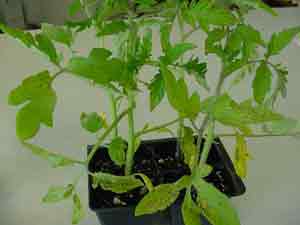Tomato Problem
go.ncsu.edu/readext?175447
en Español / em Português
El inglés es el idioma de control de esta página. En la medida en que haya algún conflicto entre la traducción al inglés y la traducción, el inglés prevalece.
Al hacer clic en el enlace de traducción se activa un servicio de traducción gratuito para convertir la página al español. Al igual que con cualquier traducción por Internet, la conversión no es sensible al contexto y puede que no traduzca el texto en su significado original. NC State Extension no garantiza la exactitud del texto traducido. Por favor, tenga en cuenta que algunas aplicaciones y/o servicios pueden no funcionar como se espera cuando se traducen.
Português
Inglês é o idioma de controle desta página. Na medida que haja algum conflito entre o texto original em Inglês e a tradução, o Inglês prevalece.
Ao clicar no link de tradução, um serviço gratuito de tradução será ativado para converter a página para o Português. Como em qualquer tradução pela internet, a conversão não é sensivel ao contexto e pode não ocorrer a tradução para o significado orginal. O serviço de Extensão da Carolina do Norte (NC State Extension) não garante a exatidão do texto traduzido. Por favor, observe que algumas funções ou serviços podem não funcionar como esperado após a tradução.
English
English is the controlling language of this page. To the extent there is any conflict between the English text and the translation, English controls.
Clicking on the translation link activates a free translation service to convert the page to Spanish. As with any Internet translation, the conversion is not context-sensitive and may not translate the text to its original meaning. NC State Extension does not guarantee the accuracy of the translated text. Please note that some applications and/or services may not function as expected when translated.
Collapse ▲
Chatham County, April 2003Diagnosis: Ozone Injury This tomato sample was sent to NCSU’s Plant Disease and Insect Clinic for diagnosis. Comments from Dr. Frank Louws, NCSU Plant Pathologist: The lesions were irregular and dry. There was no indication of the pathogen. Symptoms were also widespread throughout the state on tomato seedlings and other plants. The problem is consistent with ozone injury and plants should recover well. If problems persist a follow-up sample may be beneficial. Leaf symptoms suggest air pollution injury (ozone damage). There is no control. Symptoms are usually more severe on lower leaves. New growth should be healthy unless more days with high ozone levels occur. Visit NCSU’s Ozone Website for more information.
This page last updated January 16, 2006. |





